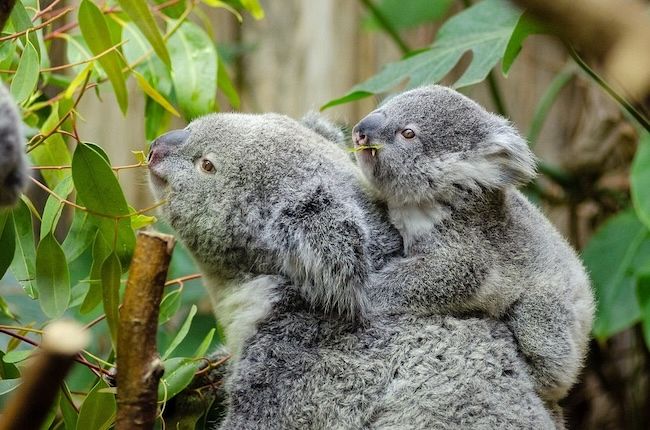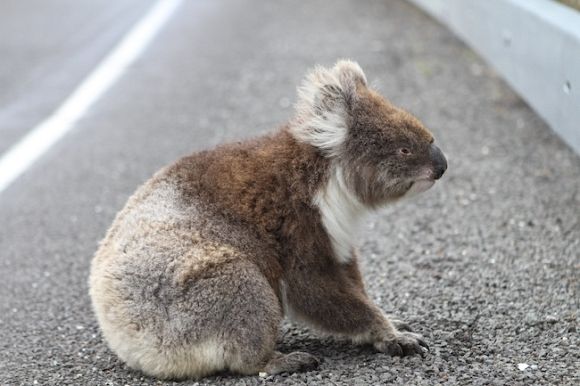Koalas are disappearing as state governments and industries destroy habitats — what will future Australians say when they are gone? Sue Arnold reports.
THE ONGOING EXPONENTIAL destruction of koalas and their habitats in NSW, Victoria, Queensland and South Australia can only be described as koala genocide.
When Australia’s environmental history is written, what will be the reaction of future Australians learning how governments, political parties, corporations, financial institutions and mainstream media facilitated the extinction of koalas? Will they ask why, when this generation experienced and witnessed the sixth great extinction, was Australia’s unique, iconic koala sacrificed?
With the re-election of the Albanese Government and the Greens holding the balance of power in the Senate, the future survival of the koala will be on the line. In spite of a deeply flawed prediction that "koalas will be extinct by 2050", loved by mainstream media and politicians alike, given the current state of affairs, koalas will be lucky to make it through the next decade.
Remembering in 2022, Opposition Leader Sussan Ley, then Coalition environmental minister, declared koalas endangered in NSW, Queensland and the A.C.T. under provisions of the Environment Protection & Biodiversity Conservation Act 1999 (EPBC Act). Both the Queensland and NSW State Governments took their time in upgrading state lists of endangered species to include the koala.
Unfortunately, the listing was only good for propaganda purposes. In terms of protecting habitats, ending native forest logging, blue gum plantation harvests, mega urbanisation projects, fossil fuel exploration and infrastructure projects, the "endangered" status is a dismal failure.
Facts speak for themselves.
Let’s begin with NSW under the Labor premiership of Chris Minns.
Concern for koalas was at an all-time high following the Black Summer bushfires, impacting approximately 60,000 koalas across the nation’s burnt regions. Sussan Ley acknowledged the loss of over 8,000 koalas on NSW’s mid-north coast alone.
When Labor made a pre-election promise in 2023 to create the Great Koala National Park, ensuring an area comprising 300,000 hectares of native forests would give the state’s koalas the best chance of ongoing survival and thriving, Labor received significant votes supporting the promise.
The non-existent park is now the most prominent symbol of failed Labor promises, reduced to a skeleton as more and more koala habitat is logged, corridors lost, with native forest converted into plantations.
NSW Forestry Corporation (FC) continues to cost taxpayers millions of dollars. The FC annual report released in December shows a reported $29 million loss in the native hardwood division, almost double the figure reported last year.
According to the Nature Conservation Council, this brings the total loss over the past four years to $73 million.
Professor David Heilpern, former magistrate and now dean of law at Southern Cross University, doesn’t mince words in his descriptor of the state-owned corporation and its record of convictions over breaches in harvesting practices.
Heilpern said:
“If they were a bikie group they would be a criminal organisation. Anyone with that number of convictions the vernacular is to call them a criminal organisation."
In a recent judgement in the Land and Environment Court of NSW, Justice Rachel Pepper noted the corporation’s “lengthy record of prior convictions for environmental offences.”
Globally recognised ecologist ANU’s Professor David Lindenmayer makes clear his view on FC:
“From any perspective you look at it, this really is a criminal organisation in terms of crimes against the environment, crimes against biodiversity, but also crimes against the state’s finances."
Moving on to Queensland, LNP Premier David Crisafulli and NSW Premier Chris Minns share a similar contempt for koalas and their habitat.
In spite of a finding by the Federal Government’s threatened species subcommittee that only 7,752 koalas would live in the wild in south-east Queensland by the 2032 Olympic Games, Cristafulli’s Government introduced a bill allowing Olympic development to bypass 15 pieces of legislation, including the Nature Conservation Act 1992.
Queensland conservation groups are concerned that the development could involve clearing an important koala habitat at Toohey Forest — a key habitat for over 400 native wildlife species and a significant population of endangered koalas.
Yet in Parliamentary Hansard from 2020, Crisafulli, then member for Broadwater, said:
It has been nearly four years since the government announced an expert panel on this... In that time, funding for protected areas and the purchase of such is down 65 %. In that time, the government collected $36 million in environmental offsets from developers and did not spend a cent. Not one hectare of land has been bought despite $36 million being collected.
There is a study into the northern Gold Coast. That study shows that, if we continue on the current trajectory, the koala population will be unsustainable within two decades and non-existent within four decades.
Over approximately the last two decades, koala numbers in Queensland have declined by almost 50% and continue to do so.
Victoria recently cemented its role as potentially the koalas’ most significant predator with the aerial shooting of over 1,000 koalas from helicopters at Budj Bim National Park.
The raison d’être, according to the Department of Energy, Environment and Climate Action (DEECA) — a bushfire in March had left many koalas starving, potentially burnt and in need of euthanasia. DEECA asserted the site was inaccessible and therefore aerial shooting was the only option.
Who approved this alarming precedent is unknown, nor the legal grounds. Helicopters and marksmen took to the skies at least four weeks after the fire had been extinguished. The entire affair was shrouded in secrecy and was only revealed when local carers heard the shots and saw helicopters flying into the park.
DEECA acknowledged that no ground-truthing was undertaken after the three weeks of shooting. No information was available on how many females with pouch young or back young had been shot, or how many may have been wounded, as it was only possible to shoot from 30 metres away through binoculars and optic aids.
Nearby blue gum plantation harvests had greatly exacerbated the overpopulation of koalas in the park. Estimates of the number of koalas in Victorian blue gum plantations suggest between 40–50,000. Carers claim that at least 50% and up to 100% of koalas die as a result of harvesting.
With no endangered status in either Victoria or South Australia, koalas have minimal legal protection, allowing acts of cruelty to be adopted as "normal".
Several carers told IA of the suffering experienced by koalas injured in blue gum harvests:
We have a lot of babies left on their own. So if there's an incident... they've got the big hessian sacks now. They're allowed to throw koalas in the hessian sack, tie the sack up, throw them over their back, leave them in the sack, dump them in the baskets.
They can sit out on site for hours, and they can have backs, broken legs, internal, whatever. And they can just sit in those baskets for hours… until somebody either comes and picks them up and gets them into the vet clinic. And then in any of the vet clinics, they can sit there for four to five hours before they'll be looked at... There's just no care whatsoever.
In South Australia, koalas in blue gum plantations on Kangaroo Island suffer a similar fate to Victorian koalas. Former employees of a harvesting company told of their efforts to save 40 injured koalas.
According to The Guardian, employees said the injuries included broken skulls, jaws, arms and hips.
Disease is a major threat to South Australia’s koala population. University of Adelaide research shows very high levels (77%) of koala retrovirus and 32% of chlamydia in koalas tested. Mount Lofty populations have a high rate of kidney disease and cancer is prevalent.
Federally, a big sigh of relief greeted the appointment of Senator Larissa Waters as leader of the Greens. Thus far, there have been words about protecting nature, but given the crises facing koalas, their ongoing survival must surely be a top priority.
Any focus by Environment Minister Murray Watt on koala survival and the urgent need for protection from extinction is unlikely given Labor state premiers’ appalling record of failure, cruelty and rejection of environmentally responsible governance.
Koala genocide?
Ongoing habitat destruction, diseases, loss of food and shelter, climate change impacts, fires, droughts, floods, deforestation and government neglect are the perfect recipe for extinction.
Time is running out for koalas.
Sue Arnold is an IA columnist and freelance investigative journalist. You can follow Sue on Twitter @koalacrisis.
 This work is licensed under a Creative Commons Attribution-NonCommercial-NoDerivs 3.0 Australia License
This work is licensed under a Creative Commons Attribution-NonCommercial-NoDerivs 3.0 Australia License
Support independent journalism Subscribe to IA.














